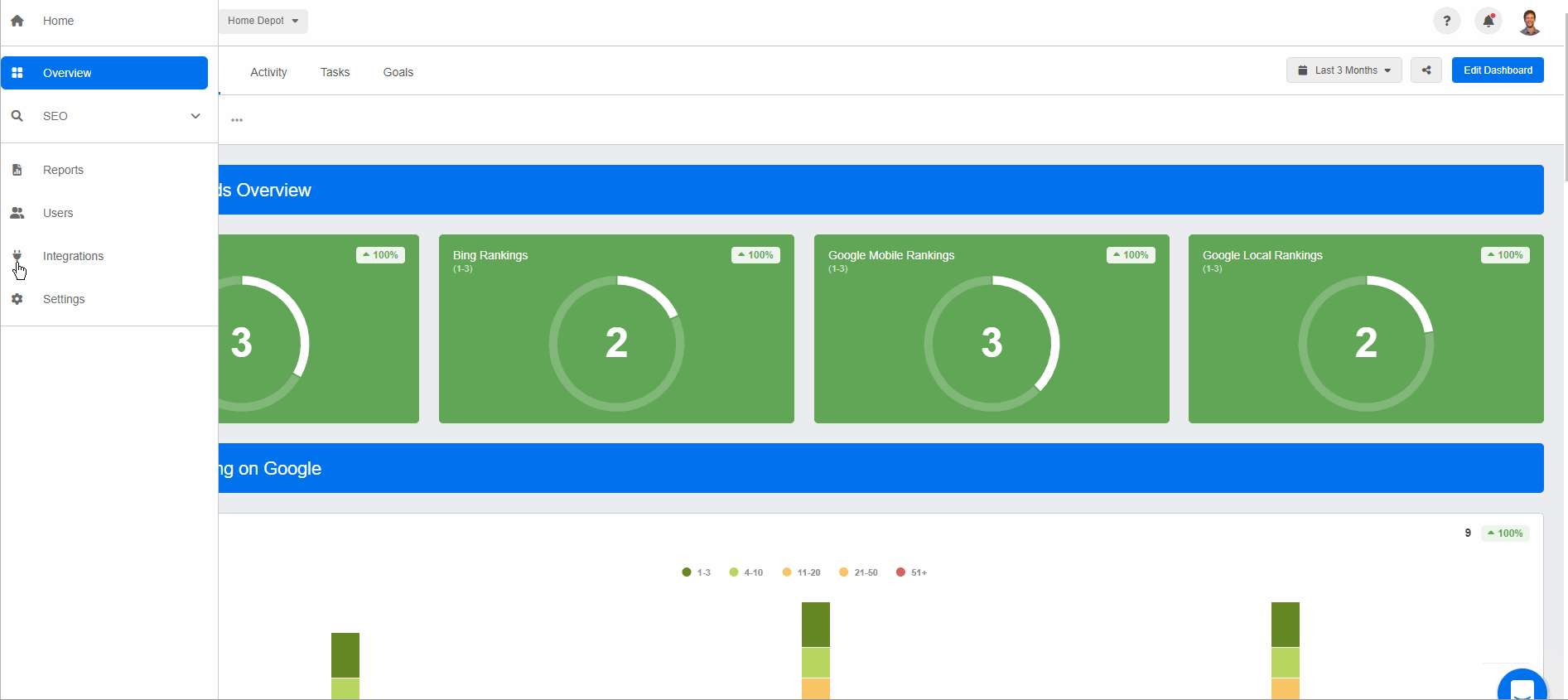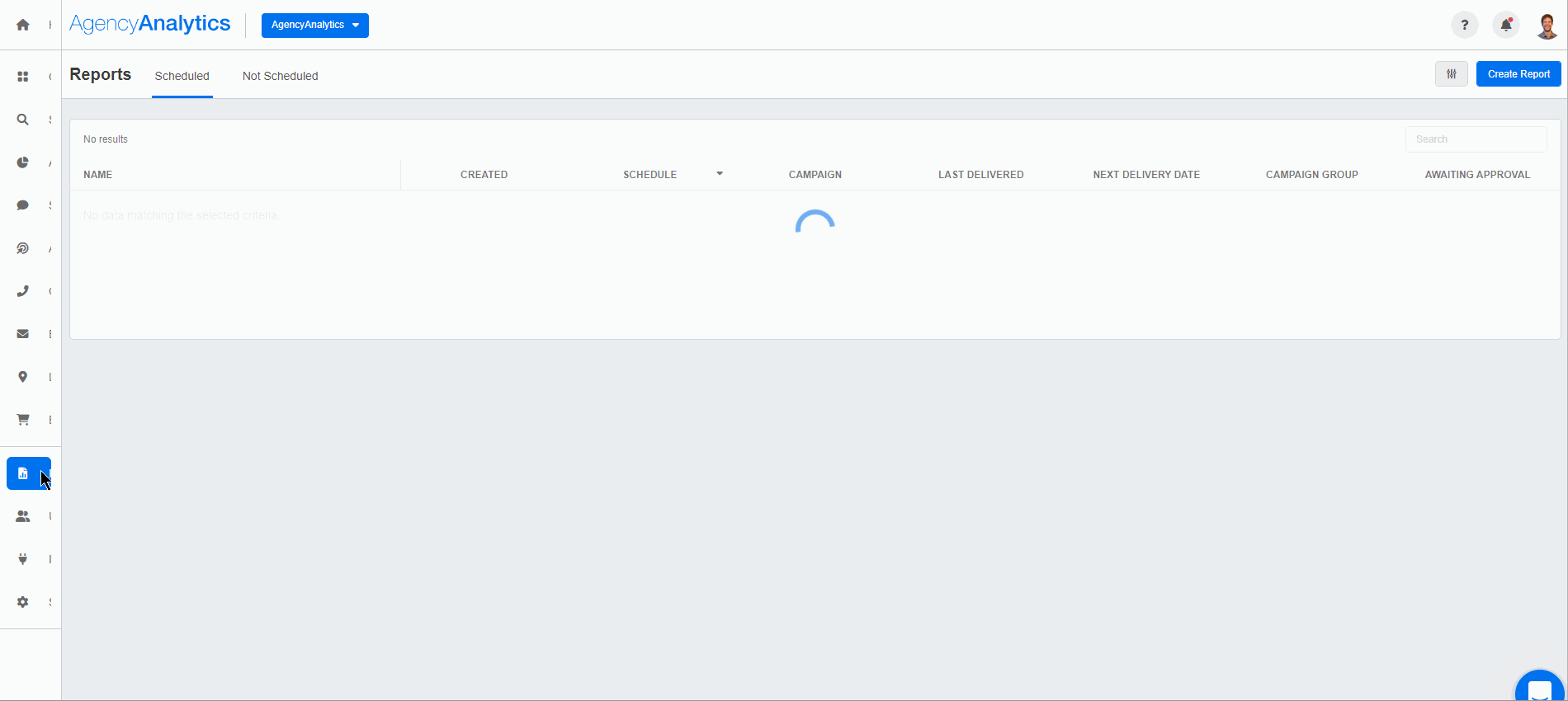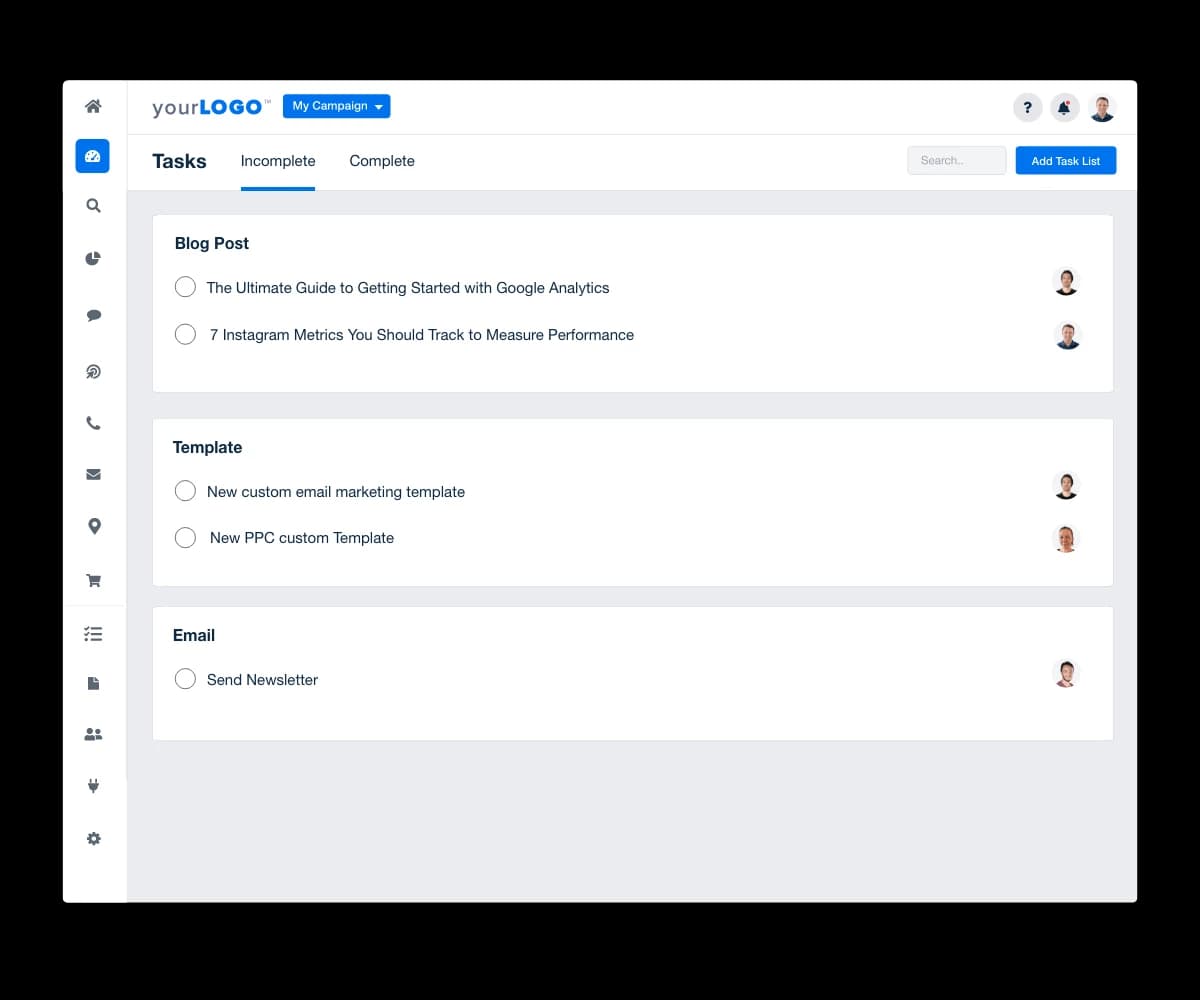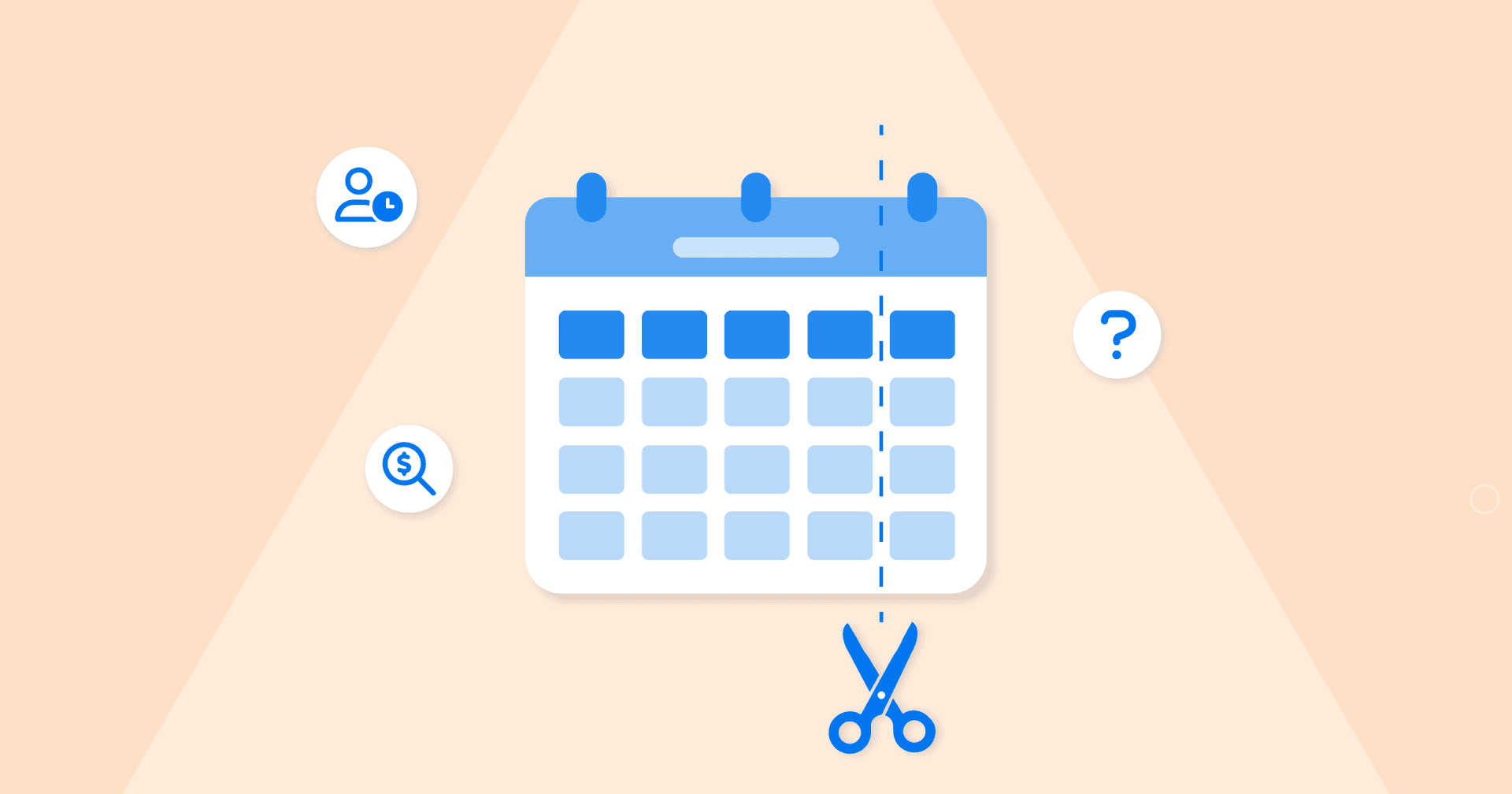Table of Contents
QUICK SUMMARY:
Marketing productivity measures an agency's effectiveness in achieving its primary goal: boosting client revenue and leads. It includes evaluating organizational efficiency in terms of specific campaign ROI, emphasizing outcomes over output. By looking at marketing agency productivity, leaders identify areas of wasted effort and redirect focus toward strategies that enhance the bottom line for clients.
A typical day at your marketing agency never quite looks the same. One minute your teams are checking emails and talking on the phone with a prospective client, and the next they’re analyzing data to optimize a campaign strategy or filming a TikTok video.
Needless to say, the ability to seamlessly switch between tasks is key to improving your agency's marketing productivity. But did you know that the average marketer still spends 16 hours every week on routine and repetitive tasks?
When time is money, you gotta wonder why marketing agencies are still spending a third of their time doing non-billable work.
This article will show you how to effectively track your marketing productivity to improve your agency's output with a streamlined results-driven approach.
What Is Marketing Productivity?
Measuring marketing productivity isn’t about getting more out of your employees. It’s about doing what needs to be done to yield the best results. Even if that means doing less.
It's the measurement of how effective your marketing team is at doing what it's supposed to do. Usually, that's increasing revenue and leads for your clients (and your agency).
The concept of marketing productivity trickles down from the organizational level (are we using our time wisely?) right down to your campaign performance (what's our ROI on Facebook ads?).
For your marketing team to spend their time more efficiently and effectively improve their productivity (and identify their hidden productivity killers), they need to understand whether their effort is driving results toward the client's bottom line by measuring:
What was done
How much effort it took to do it
How well it met the objectives of a marketing campaign
By answering these questions, your team will clearly see where added effort is being spent–and whether they were worth the results.
How To Track Your Marketing Productivity
Measuring marketing productivity can get pretty granular. So how do you track marketing efforts in a scalable way for every client?
Many of the marketing productivity metrics we'll see are easily trackable with marketing automation tools, especially to measure the productivity of an individual client’s marketing campaigns.
Agency Tip: Automate your data-retrieval process to win back the countless hours spent going back and forth between platforms.

AgencyAnalytics integrates with 80+ marketing channels, pulling all your clients’ KPIs into one place. Try AgencyAnalytics free for 14 days!
Measuring Marketing Productivity Metrics
Marketing productivity metrics help you objectively answer questions such as:
Are we on track to deliver the ROI my clients want this quarter?
How many sales are our marketing efforts leading to?
Is our marketing department bringing enough quality leads to keep up with our conversion goals?
Is my client’s Facebook Ad marketing campaign gaining enough traction to justify a budget increase?
Are we focussing the time and attention on the marketing efforts that will drive the strongest results?
Is our business model sustainable in the long run, especially during our company growth stage?
Core Components of Marketing Productivity Metrics
Let's take a closer look at some KPIs.
1. Input Metrics
These are what your agency is working on, and includes creating content for blog articles and ad campaigns–and even the time it takes to send an email or answer client questions falls under this bucket.
Content - blog posts, ad creatives, videos, assets, podcasts, etc.
Web traffic - paid, direct, organic, and referrals.
Backlinks
Advertising campaigns - both on and offline
Pageviews - how many eyeballs your content is reaching across every channel
Time spent on marketing activities - answering emails and phone calls
2. Quality Metrics
These are the goals you’re trying to track against and are usually KPIs like conversion metrics, engagement rates, and customer lifetime value (CLV).
Organic ranking
Engagement - click-to-call, email signups, etc.
Customer Lifetime Value - are the leads of any quality?
Conversion metrics - Visitor conversion rate
3. Output Metrics
These are deliverables tied to your agency’s goals. What results were achieved as a result of your input? For example, if your marketing campaign goal was to write 5 blog posts for a client’s SEO campaign, how many did you end up writing?
Leads - how many potential customers did you bring in?
Revenue from sales - annual recurring revenue (ARR) or monthly recurring revenue (MRR)
ROI - was it worth it?
ROAS - Revenue divided by the Cost of Advertising
Share of Voice - how much attention are you grabbing within your niche
4. Cost Metrics
These refer to the financial cost of the output metrics you’ve achieved, from your overall marketing budget to your staff’s salaries, and even as granular as the customer acquisition cost (CAC) of a particular ad campaign.
Customer acquisition costs (CAC)
Ad spend
Cost of tools and services - office space, software, outsourcing talent, etc.
K-factor - what is the vitality level or rate of word-of-mouth referrals? (# invites / # conversions)
Staffing - how many team members are required to execute client deliverables
6 Common Marketing Productivity Mistakes & Solutions
As we’ve mentioned above, most successful marketing agencies already measure marketing productivity metrics in their client campaigns–ROI, ROAS, and so forth. But how they organize their workflows to save time and effort to deliver the results above is another matter.
Mistake #1: Measuring Productivity After An Activity Is Completed
Productivity comes into play as you’re running your campaigns, managing your agency, or completing your daily tasks. It’s tracking how you’re measuring up against your goals as you’re trying to achieve them. So why come late to the game and measure too late?
For example, your team could be busy executing a significant content marketing strategy to boost your client’s organic rankings. But if you’re not keeping an eye on organic traffic, keyword rankings, Domain Authority, or more, how would you know that your team is creating the right kinds of content to reach your goals?
Although the benefits of SEO can take a while to kick in, there are early indicators of success that should be tracked on an ongoing basis to make sure your agency’s time and efforts are being spent on the right activities.
Waiting until the activity is over to measure efficiency could mean that your agency misses opportunities to optimize. It is also much harder to look back at what was done and estimate the time and effort it took.
Solution: Integrate Goal-tracking Into Your Campaign Metrics
Custom goal tracking is an essential part of client reporting–and your internal management. It puts your team’s results front and center in order to keep adjusting campaigns and reach their goals as they go.
On the client side of things, it allows you to show just how you’re knocking down their goals and reaching greater heights. At the same time, you'll improve marketing productivity on the agency-side.

Mistake #2: Believing That Your Output Equals Your Input
You’re a marketing agency–not an engineering firm. And when it comes to any marketing campaign, it’s about quality, not quantity. Just another reason why it's important to measure productivity.
Unless your client’s PPC campaigns are significantly limited by budget caps, simply doubling PPC ad spend across the board will not immediately double leads or sales. It’s important to understand which campaigns and activities are moving the needle, which have the opportunity to scale, and which have already reached their maximum capacity.
The same can be said for social media. If your client’s channels are driving revenue via Facebook posts, it is unreasonable to assume that by simply doubling the posting frequency you can double revenue from that channel.
Solution: Spend Time On What Delivers Results
By being a results-driven agency, you’re focused on reporting only on the KPIs that move the needle in the right direction for your clients–and contribute to their overall success. Keeping track of your marketing metrics will help you spot areas of need and optimize accordingly.
We decided early on to take a different approach than most agencies. The only metric that matters to us, the only key performance indicator is client revenue. You can't run a business based off of impressions, you have to have revenue. - Michael Gasser, Co-Owner & Partner at Squeeze Marketing
What is driving your agency revenue? Client revenue. Remember that next time your clients ask about their vanity metrics. It also puts things in perspective when you're striving to increase marketing productivity.
Mistake #3: Manually Reporting Your Marketing Metrics
Gone are the days of manual spreadsheets and Google Data Studio (now Looker Studio). We’re in the era of big data, and it’s just too much for one agency to handle manually. Too much human error and too many billable hours are lost on what a computer can automate.
Take the scenario of an agency with 20 clients that send monthly reports:
If they spend 3.5 hours total per month per client on creating reports, that’s 70 hours per month or 700 hours per year. For agencies with 60 clients, the cost of client reporting would be that of a full-time employee!
That’s a lot for a non-billable task. It's just another example of why agencies must improve marketing productivity.
Solution: Automate Your Data Retrieval
To scale your agency, you need to either delegate repetitive tasks or automate them. When it comes to client reporting, agencies can’t risk human error or use their best talent to manually retrieve data and copy-pasting them into spreadsheets. Automated reporting significantly reduces reporting costs.
By refocusing your talent on campaign optimization instead of reporting, you increase your marketing productivity by driving better data-driven results.

Mistake #4: Micromanaging Your Teams
Nobody likes a busybody. So if your agency doesn’t have an easy way to assign tasks and trust that everyone will do their job, then your agency’s managers will waste time trying to keep track of everyone’s tasks.
Solution: Integrate Task Assignments Into Your Analytics Software
Hold your teams accountable by integrating task assignments into your client reporting platform. When tasks are tied closely to marketing results, your teams will be more motivated to act on them–and know exactly what to do!

Assign tasks straight from your client reporting platform! Try AgencyAnalytics free for 14 days.
Mistake #5: Creating Unnecessary Bottlenecks
There’s nothing worse than stalling an otherwise productive team from executing their deliverables only to wait on their team leaders’ stamp of approval. This can be fine during the initial training of your top managers, but over time, the work tends to pile up and take away from the leaders doing their job: leading.
Solution: Create Marketing SOPs & Checklists
Marketing SOPs (Standard Operating Procedures) are key to reducing the time it takes to retrain new staff, stay on track, and remember how to do everything well consistently to reduce errors. Also, onboarding new hires become more streamlined and they get up to speed faster, increasing marketing productivity in the process.
Here are some marketing SOPs & Checklists for agencies:
Remember, people–and marketers–do their job better when they enjoy what they’re doing. Reducing the number of tasks that your team members don’t like to make more time to do what they enjoy will not only increase your agency’s marketing productivity but also boost your agency culture and morale.
When your teams are happy, your agency can better retain talent, save time on training or certification courses, and leverage the learning curve to your benefit!
Mistake #6: Using Tools That Secretly Slow You Down
Did you know that teams toggle between tools 1,200 times every day? That’s just under four hours wasted each week. Ouch. So while email numbers are going down, our attention is spread between multiple platforms or even a single marketing campaign.
There are a plethora of project management software to help run a marketing agency–and collaborate remotely, communicate with clients, and track progress. But having too many tools to switch between can be confusing and increase the time spent managing notifications.
Solution: Upgrade Your Agency’s Tech Stack
AgencyAnalytics integrates with 80+ marketing channels, pulling all your clients’ KPIs into one place. This keeps agencies from having to log in and out of multiple platforms just to retrieve data.

Find tools that combine multiple functionalities into one, like having an integrated keyword rank tracker, or a built-in chat function within your client reporting tool. This way, you talk metrics where metrics are concerned and leave the rest for your client meetings.
Use tools that have many integrations in-app, are intuitive, and use data visualization as much as possible. This flattens the learning curve, making it easier to onboard new team members faster.
Final Thoughts
Being busy doesn't mean anything if you're not effectively driving results. And in the era of quiet quitting, marketing productivity is more important than ever.
With so many moving parts, agencies need to track their productivity metrics to effectively scale, retain talent, and reduce client churn. So apply these marketing productivity tips to your agency to win back more billable hours and scale your agency.
Not sure where to start? Take a look at your client reporting and ask yourself: does your agency really want to waste 30+ hours each month on client reporting?

Switching to Automated Reporting Software increases your marketing productivity by significantly cutting down the time it takes to create client reports. Pull all your clients’ marketing metrics into one streamlined platform. Start your free 14-day trial with AgencyAnalytics today!

Written by
Melody Sinclair-Brooks brings nearly a decade of experience in marketing in the tech industry. Specializing in B2B messaging for startups and SaaS, she crafts campaigns that cut through the noise, leveraging customer insights and multichannel strategies for tangible growth.
Read more posts by Melody Sinclair-BrooksSee how 7,000+ marketing agencies help clients win
Free 14-day trial. No credit card required.






